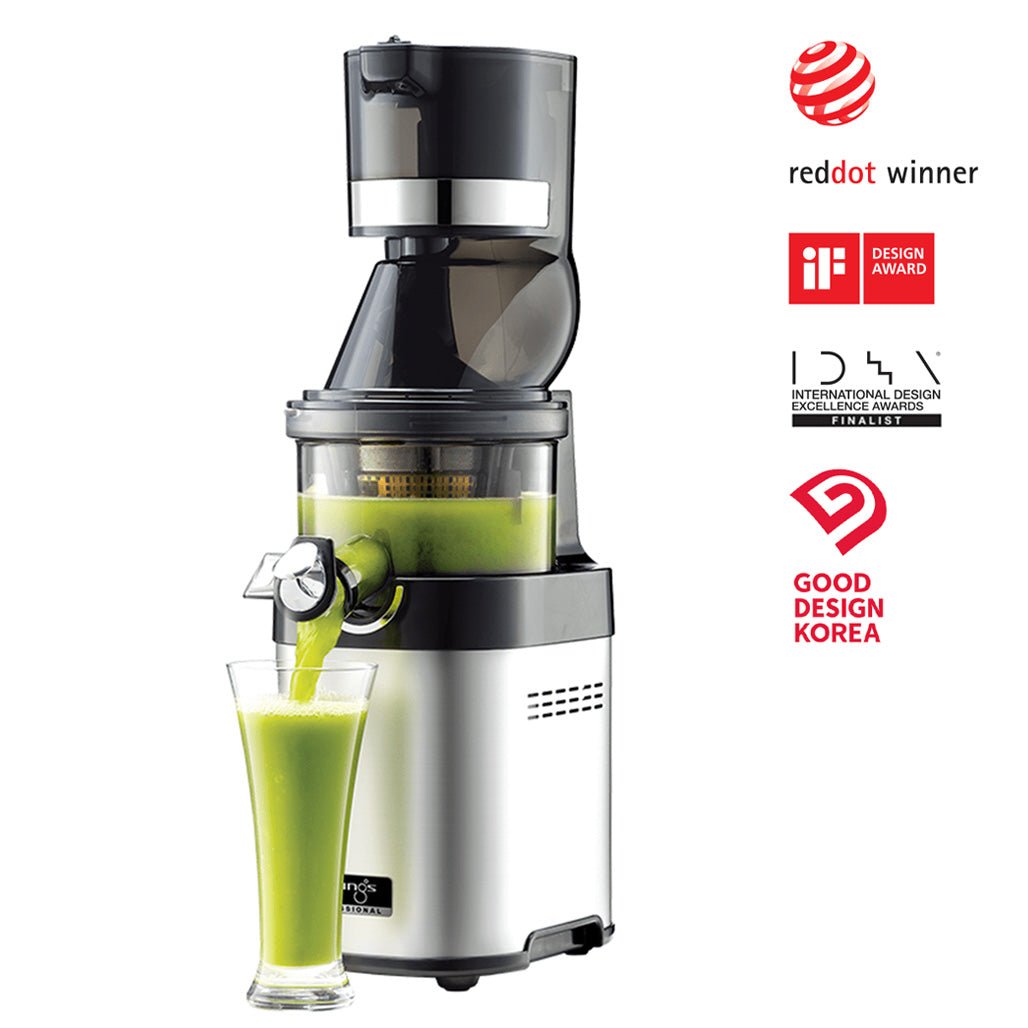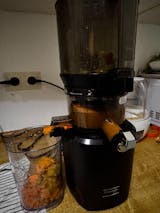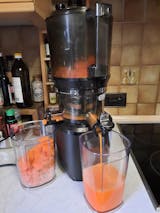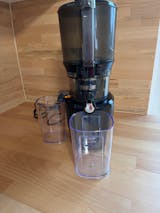Juice soft fruits
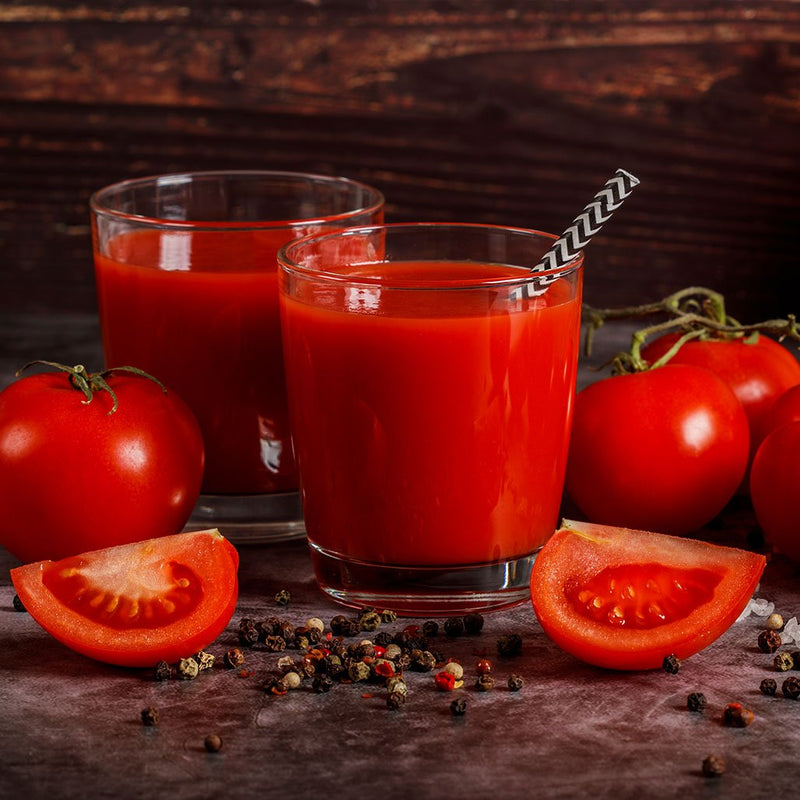
Can you juice soft fruits?
You can juice soft fruits, but not all. Some fruits juice well using certain techniques, while other textures are better suited to other recipes.
Can you juice soft fruits?
Juicing berries poses particular challenges due to their soft consistency. Our team put the fruit to the test by juicing berries, grapes, mango, banana and avocado with our top product Kuvings Slow Juicer REVO830. In this article, we share our discoveries and some must-have juicing tips to ensure you get the most out of your berries.
Berry
You may have wondered whether different types of berries are suitable for juicing - the answer is a resounding yes! Because berries are small fruits and contain more pulp than water, many berries are required to get a good quantity and the yield may be slightly higher. But don't worry, the juice is still flowing in abundance.
https://kuvings.de/blogs/rezepte/kirsch-bananen-saft

Grapes
The creation of grape juice is thanks to the ability to juice grapes! The grapes are soft yet bursting with high liquid content, making them effortless for the juicing process.
Making grape juice is a breeze – all you have to do is carefully pick the grapes from the stems. Grapes are easy to juice because their soft seeds won't harm your trusty juicer. Say goodbye to store-bought grape juices by making your own at home.
mango
Juicing mangoes can be a bit of a challenge. Mangoes have lower liquid content, which results in lower juice yield. The key is choosing the right level of ripeness – somewhere between firm and soft. As mangoes ripen, their consistency becomes softer, which can result in a consistency similar to puree when juicing.
https://kuvings.de/blogs/rezepte/mango-kokos

banana
Juicing three bananas with their peels surprisingly yielded about half a cup of juice. Intrigued by this discovery, we conducted follow-up tests to find out which part of the banana contained the juice. To our surprise, we discovered that the juice was not hidden in the banana pulp as expected, but in the banana peel! While banana peels contain all the juice and are rich in antioxidants, magnesium, potassium, protein, vitamin B6 and vitamin B12, banana peel juice is extremely bitter. Therefore, for taste reasons, it is better to juice the banana whole, as we did in the video below. However, the resulting banana juice had a unique and questionable appearance. That's why we leave the decision up to you: Is juicing bananas worth it? Would you drink this banana juice?
Tips for juicing berries
The tips listed below don't just apply to soft fruit, but can be applied to all ingredients. However, there is one characteristic feature that you may notice when juicing soft fruits: the dryness of the expelled pulp, also called pomace. The flesh of berries feels noticeably moister. This is due to the inherent challenge of extracting every last drop of liquid from softer ingredients. Initially the pulp, also known as pomace, is slightly moister, but as the juicing process progresses the pulp gradually becomes drier.

1. Juice them before they get too ripe
As we explained in the “Mango” section, the ripeness of the fruit plays a crucial role in the success of juicing. The golden rule when juicing berries applies to all ingredients: choose a semi-solid fruit for best results. While this principle applies to all fruits, it is particularly important for berries due to their inherently delicate nature.
2. Juice made from water-rich ingredients
When juicing, water-rich ingredients ensure bountiful yields, but also play a crucial role in softening the fruit during the juicing process. Their high water content dilutes and dilutes the texture of delicate fruits such as berries, grapes and mangoes. The result? A more consistent flow through your juicer, without the dreaded risk of clogging. Consider pairing your berry fruits with the hydrating goodness of melons, cucumbers, and celery.
3. Juice made from hard ingredients
It's not just water-rich ingredients that are the key to success - hard ingredients also play a crucial role! We strongly recommend juicing soft and hard ingredients alternately, as hard ingredients act as a natural guide, pushing all ingredients through the holes of the strainer. This seamless interplay of textures ensures a smooth and efficient juicing process and prevents unwanted clogging of the pomace outlet or slowdowns. Try juicing your berries with hearty root vegetables like carrots and beets!
Alternatives
1. Prepare sorbets with the sorbet filter
Whether your fruit is soft or firm, freezing it can transform it into a delicious, icy sorbet. All of our Whole Slow Juicers are equipped with a special sorbet strainer that simplifies your sorbet preparation. You can find more information about using the sorbet strainer here.
2. Prepare smoothies with the smoothie filter
Berry fruits are perfect for smoothies because their naturally delicate consistency blends effortlessly into the creamy, thick texture of smoothies. A smoothie and sorbet filter set is available for all Kuvings slow juicers and is available as an option.
3. Use a blender
Unlike juicing, blending does not separate the juice from the pulp, but rather combines all the delicious parts of your ingredients. Despite this difference, you can still achieve a thin, juice-like consistency when blending with a generous amount of liquid. When it comes to the perfect blender, you've come to the right place, discover the CB1000 vacuum blender. Thanks to the vacuum sealing function, every creation you prepare will be creamier, fresher and last longer.





![[ The New York Times ] Kuvings Entsafter - Eine Investition in die Gesundheit - Kuvings Deutschland](http://kuvings.de/cdn/shop/articles/the-new-york-times-kuvings-entsafter-eine-investition-in-die-gesundheit-5051352.jpg?v=1763482421&width=1080)
![[ Kuvings ausgezeichnet ] Präsidentenauszeichnung für regionale Innovation in Südkorea - Kuvings Deutschland](http://kuvings.de/cdn/shop/articles/kuvings-ausgezeichnet-prasidentenauszeichnung-fur-regionale-innovation-in-sudkorea-1602687.jpg?v=1762447229&width=1080)



